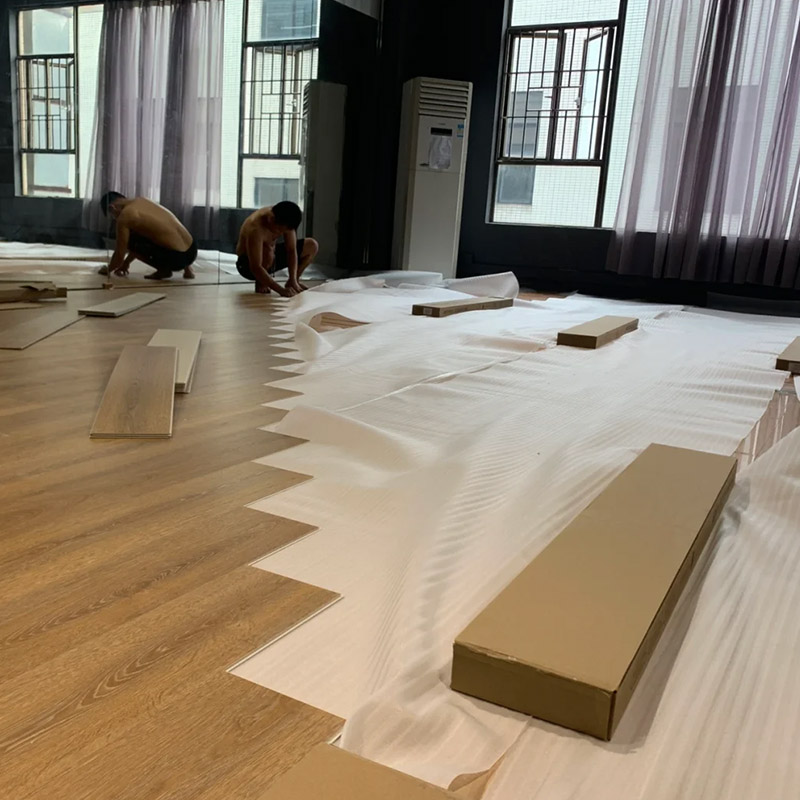
One of the most common questions when installing luxury vinyl flooring (LVT) is whether baseboards need to be removed before the installation process. Removing baseboards can seem like a hassle, but in many cases, it’s not necessary. Let’s explore this topic and determine the best approach.
No, you don’t always have to remove baseboards to install luxury vinyl flooring. However, the choice depends on the specific circumstances, such as the type of installation method and the condition of your existing baseboards. Learn more about baseboard removal for LVF installation1.
In this article, we’ll discuss the pros and cons of removing baseboards, the reasons you might need to do so, and other factors to consider during installation.
Can you install vinyl flooring without removing baseboards?
Yes, it’s often possible to install luxury vinyl flooring without removing the baseboards, but there are some important considerations to keep in mind.
You can install vinyl flooring without removing baseboards, especially if you use the “floating” method, which doesn’t require glue or nails. However, the gap between the floor and the baseboard will need to be concealed. Read more about the floating floor method2.
Dive deeper into installing LVT without removing baseboards
1. Using the Floating Floor Method
- With the floating floor installation method, the vinyl planks simply click together without being glued or nailed down. This method allows the planks to expand and contract with temperature and humidity changes. Since the planks don’t need to be attached to the subfloor, baseboards can be left in place to cover the expansion gap around the perimeter of the room.
2. Expansion Gaps
- When installing any floating floor, an expansion gap is necessary to allow the floor to breathe. This gap is typically about 1/4 inch wide around the edges. If you don’t remove the baseboards, you’ll need to make sure that this gap is hidden. The baseboards usually cover the gap, making it less visible.
3. Trim and Quarter Round Molding
- If the baseboards are already in place, you might consider using quarter round molding to cover the expansion gap. This way, the baseboards aren’t removed, but the gap is still concealed for a neat and professional appearance. Learn more about using quarter round molding3.
Do flooring installers remove baseboards?
When you hire professionals to install luxury vinyl flooring, the removal of baseboards depends on the type of installation and the desired finish.
Flooring installers may remove baseboards if they feel it will help achieve a cleaner look or if they’re using glue-down vinyl. However, it’s not always necessary. Discover the pros and cons of removing baseboards4.
Dive deeper into the installer’s perspective
1. Glue-Down Installation
- With glue-down vinyl planks, the baseboards are more likely to be removed. This type of installation requires the vinyl to be glued directly to the subfloor, and the baseboards often need to be taken off to ensure the flooring is laid right up to the wall. The installers might remove the baseboards and reinstall them afterward to create a seamless transition.
2. Cost Considerations
- In some cases, homeowners may request that the baseboards stay in place to save on additional labor costs. Some installers will be willing to work around the baseboards if it’s feasible, especially if using a floating floor method.
Do baseboards need to be removed?
Removing baseboards is not a requirement in most situations, but it depends on several factors, such as the type of flooring, the installation method, and personal preference.
Baseboards don’t always need to be removed unless you want the floor to go completely under them or you’re using glue-down planks that require precise edge installation. Find out when baseboard removal is necessary5.
Dive deeper into the need for baseboard removal
1. Level of Floor Installation
- For a more polished look, some people choose to remove the baseboards to allow the vinyl planks to sit flush against the wall. This ensures a cleaner transition between the floor and the wall, especially if you want the vinyl to go all the way up to the wall without a visible gap.
2. Ease of Installation
- If the existing baseboards are not attached too securely or are in poor condition, it might be easier to remove them to avoid damaging the flooring during installation. If the baseboards are tight against the wall, you may need to trim them for the vinyl to fit properly.
Should baseboards touch vinyl plank flooring?
Baseboards should ideally not touch the vinyl plank flooring. Leaving a small gap between the floor and the baseboard is crucial for expansion and contraction purposes.
Baseboards should be installed slightly above the vinyl floor to allow for the necessary expansion gap. This prevents the baseboards from pushing against the planks when they expand or contract due to changes in humidity or temperature. Learn why baseboards shouldn’t touch vinyl flooring6.
Dive deeper into baseboard and vinyl plank installation
1. Expansion Gap
- Vinyl flooring needs room to expand and contract, particularly in spaces that experience humidity changes. A small gap of about 1/4 inch between the flooring and the baseboards ensures the planks can shift without damage. If the baseboards touch the floor, the planks may be restricted, leading to buckling or warping.
2. Quarter Round Molding
- As mentioned earlier, quarter round molding is a popular solution to conceal the expansion gap without removing baseboards. It provides a clean, finished look while still allowing the floor to expand and contract freely.
Conclusion
In most cases, you don’t have to remove baseboards to install luxury vinyl flooring, especially if you’re using a floating installation method. However, removal may be necessary for glue-down methods or if you prefer a more seamless appearance where the floor sits flush against the wall. Whether or not to remove baseboards largely depends on the installation technique, your aesthetic preferences, and whether you need to account for expansion gaps.
The key takeaway is that baseboards should not touch the vinyl floor directly, as this could limit the floor’s ability to expand and contract. Using quarter round molding can be a simple and effective way to achieve a polished look without removing the baseboards.
Understanding these details will help you make an informed decision, ensuring a smooth and long-lasting vinyl flooring installation.
Footnotes:
-
Learn more about whether baseboards need to be removed for a smooth LVF installation, considering various methods and preferences. ↩
-
A detailed explanation of the floating floor method, which allows vinyl flooring to expand and contract freely without glue or nails. ↩
-
Discover how to use quarter round molding to hide expansion gaps and maintain a professional finish while leaving baseboards intact. ↩
-
Explores when flooring installers may choose to remove baseboards and when it’s not necessary, depending on the installation method. ↩
-
Find out under which circumstances you might need to remove baseboards for luxury vinyl flooring installation, especially with glue-down methods. ↩
-
Learn why it’s important to leave an expansion gap between baseboards and vinyl flooring, and how quarter round molding can help. ↩


